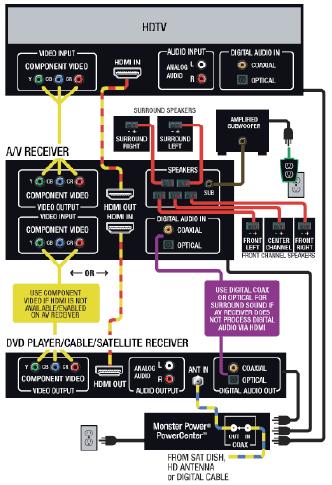When configuring AV systems, the importance of wiring and signal transmission is vital. Effective infrastructure does more than just ensures that sound and video quality are retained but also delivers the stability of the overall system. In any AV setup, whether for a school, corporate space, or residential cinema, optimizing the wiring can lead to enhanced performance and reduced technical issues. This article will outline essential strategies for enhancing wiring and interfacing in AV solutions.
The initial step in optimizing media installations is to select the right cables for the task. Distinct types of cables fulfill specific purposes, so choosing appropriate ones is important. For example, HDMI cables are standard for transmitting high-definition image and acoustic signals. In comparison, balanced audio cables like XLR can reduce distortion in sound systems. It is critical to evaluate the span and durability of these cables, as longer cables can result in signal degradation. By investing in professional-grade cables that suit the specific needs of the AV setup, users can significantly enhance total performance.

Another essential strategy is structuring the wiring efficiently. A systematic wiring system not only appears more professional but also improves functionality. Using cable management solutions like clips, ties, or sleeves can assist arrange wires organized and eliminate tangling. This structure also makes it more efficient to diagnose any issues that may emerge. Labeling each cable according to its function or origin can minimize time during installations or servicing. A clear layout helps technicians readily locate connections, which is especially valuable in large-scale systems with multiple devices.
Additionally, analyzing the configuration of the space is crucial for improving connectivity. The location of devices can affect how signals travel through cables. Positioning devices too far apart moved here may call for longer cables or signal boosters, which can be costly and degrade quality. It is advantageous to plan the layout of equipment thoughtfully, taking into account the distance between devices and potential barriers such as walls or furniture. This optimized placement can minimize issues related to signal loss and strengthen signal integrity throughout the AV system.
Scheduled system inspections are another critical strategy for ensuring maximum functionality of AV infrastructure and connectivity. Over time, cables may become frayed due to handling or aging. Regularly this inspecting all connections helps catch potential problems before they worsen into serious issues. Upgrading worn-out cables and cleaning connectors can preserve signal quality and guarantee the system runs smoothly. Maintaining a checklist for regular maintenance can help users manage this aspect of their AV infrastructure.
Finally, staying informed about emerging innovations and guidelines is essential for anyone involved in AV solutions. The industry is rapidly changing with breakthroughs in technology that can enhance performance and efficiency. Attending workshops, following industry journals, or becoming a member of professional communities can deliver beneficial insights into best practices and latest tools available on the market. By leveraging these advancements and adapting them to current systems, users can upgrade their AV solutions consistently while maintaining they remain updated with industry progress.
In summary, optimizing infrastructure and AV performance in AV systems involves careful selection of cables, effective organization, strategic space design planning, routine maintenance checks, and keeping informed on technological advancements. By utilizing these practices, users can achieve better performance and reliability in their audio-visual setups, ultimately leading to a more enjoyable experience for everyone involved.